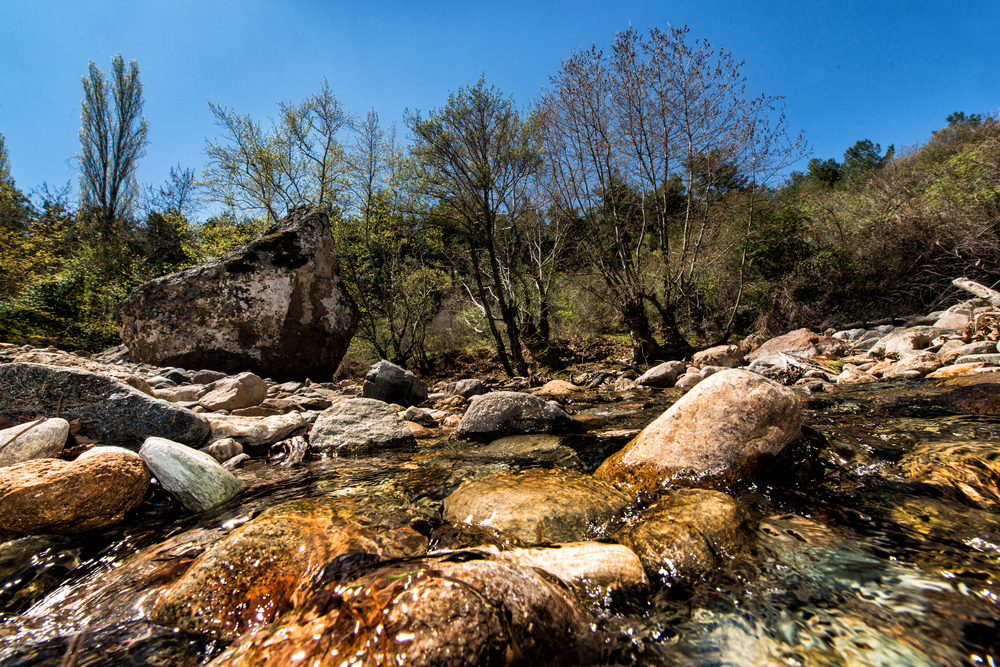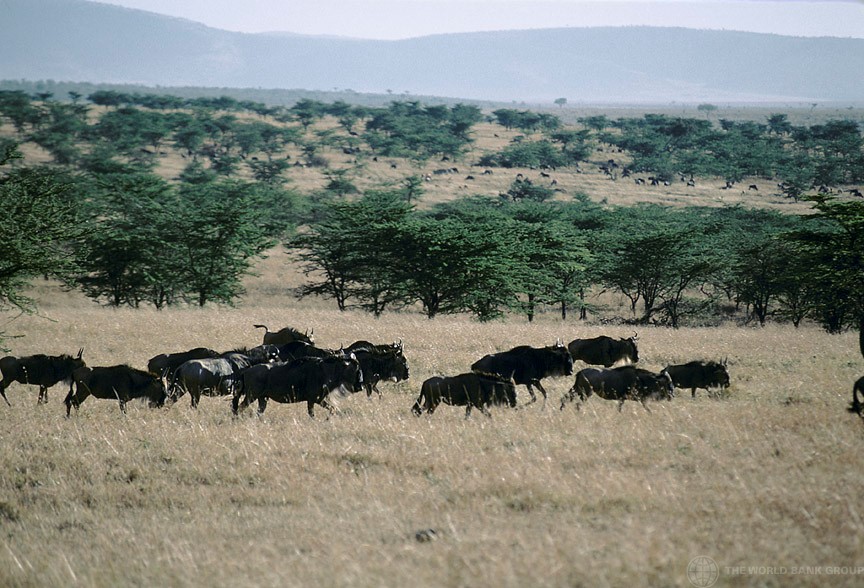Jobs

Share
Five reasons to celebrate forests
Trees may not seem like anything exceptional, but they perform a myriad of services that we rarely recognize.![]() From making cities cleaner and cooler, to providing economic lifelines to millions of people, trees and forests are central to our environment as we know it.
From making cities cleaner and cooler, to providing economic lifelines to millions of people, trees and forests are central to our environment as we know it.
Unfortunately, global forest loss is at an all-time high, and unless we act soon, we risk unprecedented (and possibly irreversible) ecological changes.
It’s time to stop taking forests for granted. On this International Day of Forests, take a minute to enjoy the trees in your environment and to appreciate just how important forests are around the world. Here are five reasons to celebrate forests:![]()
1. Higher incomes, more resilient communities
Across the world, trees and forests provide benefits to around 1.3 billion people, including as a source of food, timber, fodder, fuel, and habitat for biodiversity. A PROFOR study in five African countries found that trees on farms make up as much as 17 percent of rural households’ gross annual income. And in Lao PDR, research shows that villages with greater access to forests are less sensitive to climate change because they can to turn to forests for resources during hard times. Ongoing PROFOR work is exploring the ways in which forests might also provide pathways out of poverty.
2. More jobs
Global demand for wood is growing rapidly. By investing in the forest sector, countries can create good jobs, support local artisanship, and formalize timber markets so that wood is sustainably harvested, and natural forests are protected. In Colombia, a PROFOR-supported study estimated that the forestry sector could reach a production value of over $4 billion and create 35,000 permanent jobs in forest plantations and industries. Another study in the Congo Basin found that urban timber markets already generate USD $15 million annually and employ at least 5,000 people.
3. More productive and cost-effective agriculture
Far from crowding out crops, trees can often improve agricultural yields by improving soil quality and regular water availability. PROFOR research in Malawi found that, instead of subsidizing fertilizer, the government could save about $71 million every year by encouraging farmers to grow trees in their maize fields. And agroforestry is not just an option for small farms; private enterprises like Fazenda da Toca in São Paulo are proving that large-scale agroforestry is viable and cost-effective.
4. Lower risk of natural disasters
Forests are a critical regulating force for our environment. A PROFOR study in the Philippines showed that higher forest cover ensures a more reliable water supply during the driest months of the years, while reducing the volume of floodwater during the wettest months. Forests also stabilize hillsides by decreasing the risk of soil erosion, helping to reduce the impacts of landslides and other natural disasters. Compared to man-made structures like dams and, maintaining forests is a much more cost-effective way to provide these benefits.
5. A more stable climate
Not only do trees help to cool our immediate surroundings, but by storing carbon they reduce the impacts of climate change. Unless, of course, we fail to protect them. An ongoing PROFOR activity finds that the southern Amazon Forest is under such stress from droughts and fires that it might soon become a net emitter of carbon dioxide (CO2). The good news is that it’s not too late to start restoring a billion hectares of degraded forests worldwide. A recent report, funded by the Climate Investment Funds (CIF) and PROFOR, estimates that investing in forest restoration and increased use of wood products in six countries could result in more than 150 million tons of CO2 equivalent being sequestered.
For stories and updates on related activities, follow us on twitter and facebook , or subscribe to our mailing list for regular updates.
Last Updated : 06-16-2024

How Productive Forests can Help Foster Green Growth and Mitigate Climate Change
Across the globe, demand for wood products is increasing and expected to quadruple by 2050. This trend is exacerbating deforestation and forest degradation. But it also presents an opportunity for a better approach to farming and managing forests.
A new report, Harnessing the Potential of Private Sector Engagement in Productive Forests for Green Growth, shows how sustainably harvesting wood products can help meet growing demand while providing jobs, mitigating climate change and conserving primary forests.
While it’s well known that trees and forests provide an important carbon sink, the carbon stored in forest products is often overlooked. Forest products and materials such as those used for construction and furniture store carbon for decades and even centuries.
Choosing wood products over other non-renewable materials, such as concrete and steel for construction materials, also offers climate benefits. Concrete and steel require fossil fuel to produce, making these alternatives much more carbon intensive. For example, producing a concrete wall puts 15 times more carbon dioxide into the atmosphere than making a wooden one.
The new report, funded by the Climate Investment Funds (CIF) and the Program on Forests (PROFOR), examined the economies of six countries - Ethiopia, Colombia, Mexico, Mozambique, Peru and Vietnam - to estimate the potential climate mitigation benefits from forest-based supply chains. Together, the six countries could sequester more than 150 million tons of CO2e (see table below) by 2030 with adequate investments in forest restoration and the increased production and use of wood products. Such an approach could help countries meet their climate commitments under the Paris Climate Agreement.
Investing in wood supply to meet demand through landscape restoration and other means also brings benefits, especially by creating new forest industry jobs in rural areas. Potential employment benefits in the six countries studied are depicted in the table below. In addition, projected demand for wood products could encourage the private sector to make long-term investments in productive forests, plantations, and wood processing.
Moving forward on sustainably harvesting forests is a delicate balance between production and conservation. If promoting forest products leads to deforestation, then climate mitigation is lost. To get the balance right, governments must create an enabling environment through better law enforcement and governance. That would help to protect and more sustainability use forests, improve land tenure, and provide the incentive mechanisms to attract private sector investments. Plantations will be key for renewable energy - sustainable charcoal and wood chips - in the future. Private investors, rural communities and forest owners also need technical assistance to help with forest management and production, as well as easier and quicker access to market information.
“Investing in sustainably managing and using forests offers longer-term benefits over the frequently under-productive and disorganized use of many forests today,” says Gerhard Dieterle, program manager for the World Bank’s Forest Investment Program. “As found in this study, doing so would unquestionably benefit people and the planet.”
Click here to watch the video on the interview with the authors.
For stories and updates on related activities, follow us on twitter and facebook , or subscribe to our mailing list for regular updates.
Last Updated : 06-16-2024

Share
Related Links
When Good Conservation becomes Good Economics : Kenya’s Vanishing Herds
Keywords
Kenya, protected areas, wildlife, Biodiversity, Jobs, poverty, tourism
Kenya Tourism and Sustainability
CHALLENGE
Nature-based tourism makes a significant contribution to exports, GDP, jobs, and poverty reduction in Kenya. But habitat loss, overcrowding at key tourist sites, depleting wildlife numbers, and the ever-present threat of terrorism have generated a perfect storm of problems for the sector.
Recent population monitoring shows that long-term declines of many of the charismatic species that attract tourists – including lions, elephants, giraffes, and impalas - are occurring at the same rates within the country's national parks as outside of these protected areas. This is partly because protected areas in Kenya are far too small to be sustainable. As a result, the wildlife depends as much on land adjacent to a protect area as on the protected area itself. Unfortunately, most of this adjacent land is being converted to other non-compatible uses. The implementation of “ecological easements” offer some promising solutions, but the feasibility of this approach depends upon economic incentives, and the opportunity costs of land.
APPROACH
This activity will focus on a critical and often overlooked threat to the survival of the key wildlife tourist attraction: habitat loss and the need to preserve corridors to assure the long-term sustainability of wildlife and mega-fauna.
First, the activity will investigate land related trade-offs. Is there more to be gained from building a tourism product or converting land to agriculture - in terms of GDP, jobs, and poverty impacts? Second, it will conduct a regional analysis in the Mara region to determine the scope for increasing the payoffs from tourism without undermining sustainability. The Mara has been chosen due to the pressures on this globally significant natural asset and its tremendous potential to generate further conservation-related economic benefits. Finally, the study will also identify the benefits and ecological costs of infrastructure throughout Kenya and thus assist in the planning of corridors and preemptive protection of habitats.
RESULTS
This project has been completed. A report titled When Good Conservation Becomes Good Economics was developed and launched in an event held in Nairobi on December 11, 2019, which was very well attended by a wide cross-section of stakeholders and government officials across numerous departments and ministries.
The report findings highlighted for the first time how wildlife loss causes economic loss in Kenya. It tackled the issue of whether there are trade-offs between wildlife and economic growth, especially given the intensifying pressures on land and natural resources. The report also outlined solutions and a way forward for Kenya to find that the balance between economic development without losing a focus on conservation. The evidence presented in this report suggests that there are wide opportunities to stop the dramatic collapse of wildlife populations and that investing in the tourism sector yields significant benefits which are especially pro-poor. The findings identified a set of tools, developed in this report, which can be used by the planners in order to consider the long-term implications of irreversible decisions and harness the full potential that the country’s natural endowment offers. Following the launch of the report, the Government of Kenya submitted a formal request for technical and financial support to advance the dialog on enhancing protection of wildlife habitats and populations within protected areas and outside of the protected areas
The report findings were used to inform the preparation of Kenya SCD and will be used to provide inputs to the CPF (to be prepared this FY as well). The report was immediately recognized by the stakeholders as a useful tool for advancing the dialog on wildlife conservation with the Government and other stakeholders. As of a result of this analytical activity, the Government of Kenya has invited the Bank to help develop a wildlife strategy.
For stories and updates on related activities, follow us on twitter and facebook , or subscribe to our mailing list for regular updates.
Last Updated : 06-16-2024

Share
Related Links
Moving Towards Sustainable Timber Markets in the Forest-Rich Congo Basin
Keywords
Congo Basin Timber
CHALLENGE
Population growth and economic development are contributing to rising demand for wood and wood
products in Africa, offering new opportunities for local producers to tap domestic markets, and also with profound implications for the forests of the Congo Basin.
APPROACH
Much work has been carried out on the informal and formal logging sector in the Congo Basin region; this study focuses on wood transformation and examining local demand for processed wood products. This research aims to build on prior knowledge to better understand the solutions needed to overcome barriers to expanding the market for legal (and sustainable) timber and processed wood products used in the domestic furniture and construction markets in Cameroon and DRC. Through data collection and analysis, new knowledge was developed regarding the current and future capacities of timber companies to provide wood for public buildings, housing and furniture for the domestic market. In addition, the analysis looks at how wood is currently sourced, and, if not sourced domestically, why. This will help gauge the potential to grow the productive use of wood in these countries. To this end, options for policies and targeted investments to increase the proportion of domestic, locally sourced wood have been identified.
RESULTS
The final report Congo Basin Timber: Case studies of urban wood products markets in the Democratic Republic of Congo and Cameroon was completed in June 2016. This work undertook supply and demand-side analysis for wood products. Local factors which can be capitalized on and considered opportunities include population and GDP growth, urbanization, a growing middle class, and increasing domestic demand for timber. In the short-to-medium term, development of the timber industry can be furthered through a range of action, including: supporting training and tools for better quality products; creating cooperatives to federate artisanal operators; promoting local wood products and innovative craftsmanship; sponsoring the use of local and legally-sourced wood for tourism infrastructure. In the medium-to-long term, the report recommends interventions such as creating structural paneling factories; providing a wide range in product prices; regulating taxes to favor local products; and making “local and legal” wood a national cause.
For stories and updates on related activities, follow us on Twitter and Facebook, or subscribe to our mailing list for regular updates
For stories and updates on related activities, follow us on twitter and facebook , or subscribe to our mailing list for regular updates.
Last Updated : 06-15-2024








